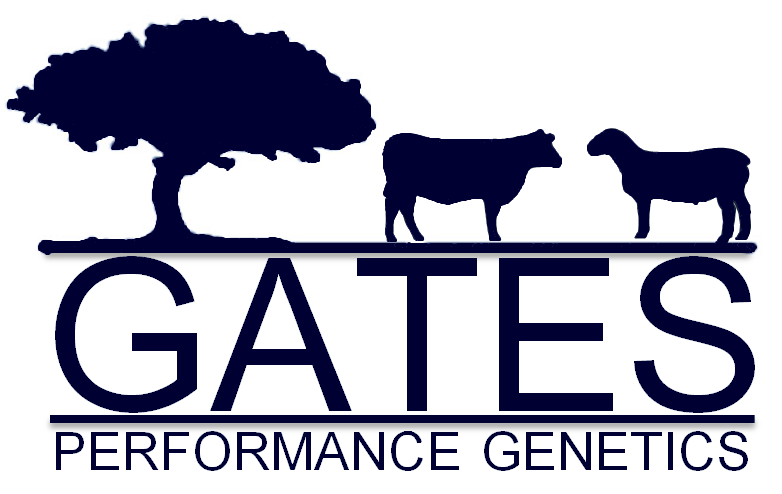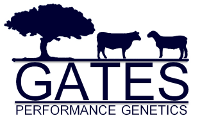
Commercial Benefits
Below I have detailed 13 key factors within a prime lamb enterprise that can enhance or limit production and thus our farm profitability. Under each point is a more detailed account of the reasoning and how we have addressed each factor. Our sheep are bred for your ease of management and for a more profitable, lower labour input enterprise.
- Lower biosecurity risk - Purchasing in replacement ewes means a certain increase and often quite high biosecurity risk for a farm. Lice, Footrot, Ovine Johne’s Disease (OJD) and resistant worms all have the potential to impose extensive costs and headaches to a prime lamb operation. By sourcing rams from a known disease free supplier in a protected OJD free area producers are able to breed replacements easily and risk free.
- Cumulative genetic gain - Each generation of replacements kept are by rams with more superior genetics than the last. These gains are cumulative and add to each economically significant trait. We must be moving ahead of the declining terms of trade and competing industries to remain sustainable into the future. A non-purpose bred sheep selected for conflicting traits and bred in a different climate is extremely unlikely to be able to do this.
- Worm resistance and resilience - Sheep have the ability to naturally defend and cope against parasitic worms. If selected for these traits they can be extremely proficient at doing so and thus not only reduce labour and chemical costs associated with drenching, but also reduces the subclinical losses of reduced production.
- Mothering ability - Lambs are tagged at birth and mothering ability recorded. Ewes need to be able to count 2 and 3 lambs, whilst adequately providing enough milk for them. Ewes can also be a deterrent in defending against predation and Coopworth ewes are renowned for this trait.
- Higher lamb survival - Lamb size and vigour are factors effecting survivability. These factors can be bred for as well as managed for if the birthweight genetics of the ewes and ram is known.
- 7 month ewe lamb joining - Being able to join ewe lambs at 7 months and wean over 100% lambs means more lambs in the lifetime of that ewe. Ewe lambs scanned empty can be sold directly into the market as lambs returning a higher price and less feed requirements than if she was to be joined at 1.5 years old then possibly culled. This eliminates ewes having to be fed for 1 year more before she returns an income and makes keeping replacements easy as.
- Fly strike resistant - We have ceased the use of fly chemicals on our ewes and have a zero tolerance for flystrike. This will translate into clients being able to do the same. One less job, one less cost and a greener image for our industry.
- Confidence in replacement performance - Purchasing ewes in from unknown parent genetics leaves one with zero confidence in how they will perform. A self-replacing ewe means one can be confident that the next generation bred from them with the right ram selection will be better than the last. Forming consistency and predictability in your enterprise.
- Ease of lambing - Lambing difficulties and slow lambing can impose significant losses from ewe and lamb deaths. If significant dystocia issues are present the labour cost can be quite large and ewe losses considerable. Secondly the time taken for a lamb to be born has a large part to play in time to first suckle (a key to lamb survival).
- Moderate adult weight - Joining ewes at 7 months as well as placing a moderate amount of selection pressure on keeping ewes at a moderate adult weight is critical to an enterprise. The ewe in conventional once a year lambing walks around for a large proportion of the year simply feeding herself. Large ewes require more feed. The more feed per ewe required means the less ewes that can be run = less lambs = less income.
- Moderate Genetic Fat - Our ewes are bred to carry slightly higher genetic fat levels to help them through tough times and also for fertility reasons. Making them a tougher more robust ewe.
- Better meet market specifications - Gates Performance Genetics Maternal Composites are specifically designed for lamb production (not half the genetics design for wool growing). We scan for Fat depth (PFAT), Eye muscle depth (PEMD) and visually assess lambs for muscle score. We have designed our sheep to be moderate framed and packed with meat, ideal for the butchers display cabinet and chefs oven trays!
- Faster lamb turnoff - High growth rates of 300-400g/day to weaning means lambs can be weaned heavier and often sold as suckers straight off mum. Post-weaning feedlot results have had lambs growing at >450g/day, meaning fast and efficient turnoff. Also if replacement ewes are measured for growth with poor performers being culled in a commercial situation, then there will be a more consistent growth rate between your lambs. Leading to larger lines of lambs ready for market at the same time (less tail).
All these issues are both the major labour components of a sheep enterprise and also some of the most easily eliminated costs. With Gates Maternals one can be confident in a reduced workload and a more profitable easy care prime lamb enterprise. The MLA Maternal Central Progeny Test program highlighted that the top maternal genetics could add $35/ewe/year to the bottom line of prime lamb flocks. Adding serious dollars to your botom line.







